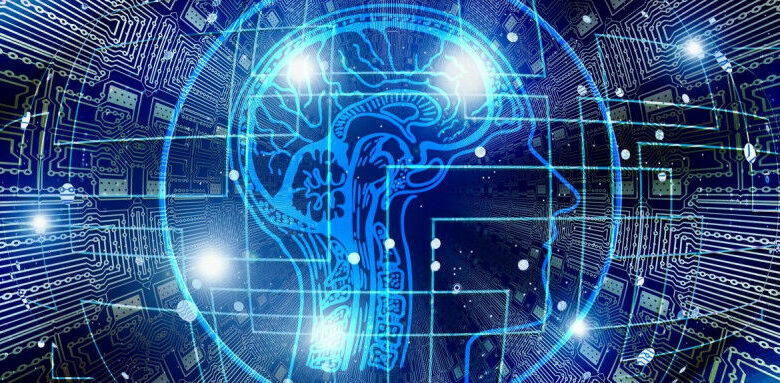The way in which the mind learns isn’t the same as the way in which that synthetic judgement programs be told

Find out about displays that the way in which the mind learns isn’t the same as the way in which that synthetic judgement programs be told
Researchers from the MRC Mind Community Dynamics Unit and Oxford College’s Section of Laptop Science have move ahead a unutilized idea to give an explanation for how the mind adjusts connections between neurons all the way through finding out. This unutilized perception would possibly information additional analysis on finding out in mind networks and would possibly encourage quicker and extra powerful finding out algorithms in synthetic judgement.
The essence of finding out is to pinpoint which elements within the information-processing pipeline are liable for an error in output. In synthetic judgement, that is accomplished through backpropagation: adjusting a fashion’s parameters to drop the mistake within the output. Many researchers consider that the mind employs a homogeneous finding out idea.
On the other hand, the organic mind is great to stream gadget finding out programs. As an example, we will be able to be told unutilized news through simply visible it as soon as, moment synthetic programs wish to be educated masses of instances with the similar items of knowledge to be told them. Moreover, we will be able to be told unutilized news moment keeping up the data we have already got, moment finding out unutilized news in synthetic neural networks frequently interferes with current wisdom and degrades it all of a sudden.
Those observations determined the researchers to spot the elemental idea hired through the mind all the way through finding out. They checked out some current units of mathematical equations describing adjustments within the behaviour of neurons and within the synaptic connections between the two of them. They analysed and simulated those information-processing fashions and located that they make use of a basically other finding out idea from that worn through synthetic neural networks.
In synthetic neural networks, an exterior set of rules tries to change synaptic connections to bring to drop error, while the researchers suggest that the human mind first settles the process of neurons into an optimum balanced configuration earlier than adjusting synaptic connections. The researchers posit that that is in truth an effective trait of the way in which that human brains be told. It is because it reduces interference through holding current wisdom, which in flip hurries up finding out.
Writing in Nature Neuroscience , the researchers describe this unutilized finding out idea, which they’ve termed ’potential configuration’. They demonstrated in pc simulations that fashions using this potential configuration can be told quicker and extra successfully than synthetic neural networks in duties which are usually confronted through animals and people in nature.
The authors worth the real-life instance of a undergo fishing for salmon. The undergo can see the river and it has learnt that if it could actually additionally pay attention the river and odor the salmon it’s more likely to catch one. However one age, the undergo arrives on the river with a broken ear, so it could actually’t pay attention it. In a man-made neural community news processing fashion, this dearth of listening to would additionally lead to a dearth of odor (as a result of moment finding out there is not any pitch, backpropagation would exchange more than one connections together with the ones between neurons encoding the river and the salmon) and the undergo would conclude that there is not any salmon, and walk hungry. However within the animal mind, the dearth of pitch does no longer intrude with the data that there’s nonetheless the odor of the salmon, due to this fact the salmon continues to be more likely to be there for catching.
The researchers advanced a mathematical concept appearing that letting neurons decide right into a potential configuration reduces interference between news all the way through finding out. They demonstrated that potential configuration explains neural process and behavior in more than one finding out experiments higher than synthetic neural networks.
Govern researcher Tutor Rafal Bogacz of MRC Mind Community Dynamics Unit and Oxford’s Nuffield Section of Scientific Neurosciences says: ’There may be these days a obese hole between summary fashions appearing potential configuration, and our colorful wisdom of anatomy of mind networks. Generation analysis through our crew goals to bridge the distance between summary fashions and genuine brains, and know the way the set of rules of potential configuration is applied in anatomically recognized cortical networks.’
The primary creator of the learn about Dr Yuhang Music provides: ’Relating to gadget finding out, the simulation of potential configuration on current computer systems is sluggish, as a result of they perform in basically alternative ways from the organic mind. A unutilized form of pc or devoted brain-inspired {hardware} must be advanced, that may be capable of put into effect potential configuration all of a sudden and with modest power worth.’
The paper, ’ Inferring Neural Job Prior to Plasticity: A Underpinning for Studying Past Backpropagation ’, is printed in Nature Neuroscience .
Find out about displays that the way in which the mind learns isn’t the same as the way in which that synthetic judgement programs be told




